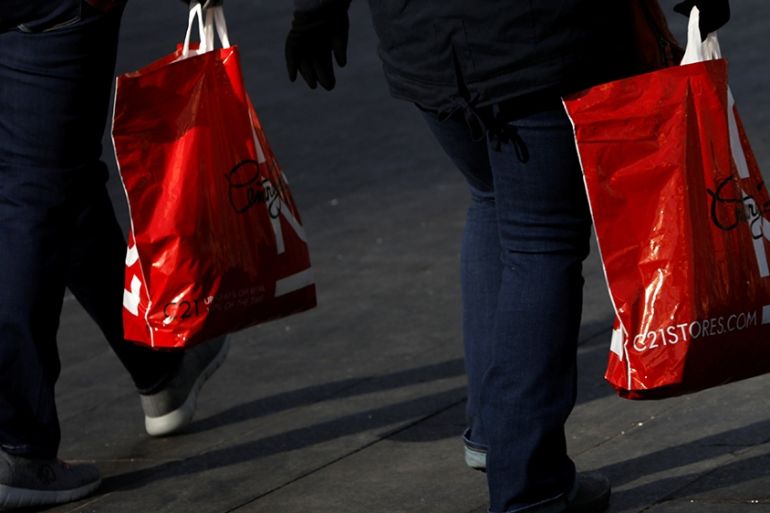The US economy is on track to miss Trump’s growth target – again
US economic growth was stronger than expected July-September, but the rate marked a slowdown from the previous quarter.

The United States economy grew at a faster clip than expected from July through September, as resilient consumer spending and a rebound in exports offset declining business investment.
The better-than-expected snapshot, reported by the US Department of Commerce on Wednesday, is likely to assuage fears that the world’s largest economy is careening towards recession.
Keep reading
list of 2 itemsTrump demands negative interest rates from Fed ‘boneheads’
US gross domestic product (GDP) – which measures the market value of all final goods and services produced – rose at a 1.9 percent annualised rate in the third quarter. Though stronger than the 1.6 percent analysts polled by Reuters news agency had forecast, the preliminary reading still marked a slowdown from the second quarter’s two percent annualised growth rate.
The trajectory suggests the economy is on track to miss the White House’s ambitious goal of 3.0 percent annual growth this year. It grew 2.9 percent last year.
The US trade war with China is eroding business confidence, which contributed to the second straight quarterly contraction in business investment. The fading boost from last year’s $1.5 trillion tax cut package is also casting a shadow over a record US economic expansion that is now in its 11th year and looking rather long in the tooth.
While President Donald Trump this month announced a truce in the trade war with China, delaying additional tariffs that were due in October, economists say growth is in danger of being compromised without all duties being rolled back.
A Trump administration official said on Tuesday that the interim, “phase one” trade agreement might not be ready for signing in Chile next month as expected.
The GDP report was published hours before US Federal Reserve officials are scheduled to wrap up their two-day policy meeting in Washington, DC and deliver their verdict on the course of US interest rates.
The Fed is widely expected to cut interest rates for the third time this year on Wednesday, having lowered them in September and in July, which marked the first rate cut in over a decade.
The resilience of the US consumer
Growth in consumer spending, which accounts for more than two-thirds of US economic activity, slowed to a still-healthy 2.9 percent rate last quarter after surging at a 4.6 percent pace in the second quarter, the fastest since the fourth quarter of 2017.
Consumer spending is being powered by the lowest unemployment rate in nearly 50 years. But some economists are starting to question the resilience of the consumer after retail sales fell in September for the first time in seven months. Consumer confidence has also been trending lower and wage growth is stalling.
Business investment fell at a 3.0 percent rate in the third quarter, the sharpest contraction in more than three and a half years, after falling at a 1.0 percent rate in the second quarter. It was pulled down by declines in spending on equipment and nonresidential structures such as mining exploration, shafts and wells. These declines reflected trade tensions, which have weighed on capital expenditure, as well as cheaper oil.
Design problems at aerospace giant Boeing have also hurt business investment. The world’s largest planemaker last week reported a 53 percent drop in quarterly profit because of the grounding of its best-selling 737 MAX jets. The planes were pulled out of service in March following fatal crashes in Indonesia and Ethiopia.
The rebound in exports blunted a surge in imports, leading to a narrowing in the trade deficit. Trade subtracted a negligible 0.08 percentage point from GDP growth in the third quarter after cutting 0.68 percentage point in the second quarter.
Business accumulated inventory at a $69.0bn pace in the last quarter after building stocks at a $69.4bn rate in the April-June period. Inventories trimmed GDP growth by only 0.05 percentage point in the third quarter compared to 0.91 percentage point in the second quarter.
Government spending cooled after rising at its fastest pace in 10 years in the second quarter. Spending on homebuilding rebounded at a 5.1 percent rate after contracting for six straight quarters.